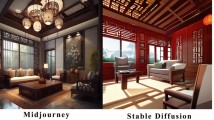Abstract
Interior design takes up a very important role in art design. As one of the most important and general part of pattern design, flower pattern design has always been the theme to which people pay most attention. This article first states the adaptive genetic algorithm, and then builds curvilinear fitting method which is based on the adaptive genetic algorithm. Furthermore, the researchers did tests on the algorithm and got the result: using this method can make the initial design project vary, and offers an effective method for flower pattern innovation design. They also used fitting operation for image materials to provide the most direct linear materials for planners, and added ways to offer initial curves of pattern design.








Similar content being viewed by others
Change history
05 December 2022
This article has been retracted. Please see the Retraction Notice for more detail: https://doi.org/10.1007/s10586-022-03893-9
References
Bao, X., Liu, Y., Yunfei, L.U., et al.: Analysis and comparison of chinese traditional blue calico patterns and folk paper-cut patterns. J. Silk 7(2), 86–92 (2015)
Liu, F.: Innovation and application of pattern design in fabrics development. Wool Text. J. 52(3), 268–272 (2017)
Zeng, Y.Q., Zhou, J.: The Application of Shaanxi paper-cut patterns in fashion design. J. Zhejiang Fash. Inst. Technol. 12(9), 106–110 (2017)
Chao, Y.U., University, H.N.: Research on the artistic characteristics and application innovation of chinese folk paper-cut. J. Jilin Univ. Arts 25(14), 299–305 (2016)
Saeidi, E., Wimberley, V.S.: International journal of fashion design, technology and education precious cut: exploring creative pattern cutting and draping for zero-waste design precious cut: exploring creative pattern cutting and draping for zero-waste design. Int. J. Fash. Des. Technol. Educ. 17(3), 356–362 (2017)
Tang, W., Wei, W.U., Chen, Y.H., et al.: Innovation of process design pattern based on C3P. Value Eng. 5(2), 56–60 (2017)
Yu, X.U., Hong Guang, Y.E.: Analysis of Haoyao Yi’s paper-cut art in Yunnan. J. Wuhan Text. Univ. 11(7), 106–110 (2016)
Jiang, M., Collece, H.: The application of traditional paper-cut in interior design. Art Des. 2(1), 136–140 (2017)
Zhang, N., University, X.N.: Innovative application of traditional pattern in modern furniture design. Packag. Eng. 19(5), 197–202 (2017)
Aldridge, C., Chapman, S.J., Gower, R., et al.: Pattern reduction in paper cutting. Prod. Eng. 49(6), 259 (2015)
Author information
Authors and Affiliations
Corresponding author
Rights and permissions
Springer Nature or its licensor (e.g. a society or other partner) holds exclusive rights to this article under a publishing agreement with the author(s) or other rightsholder(s); author self-archiving of the accepted manuscript version of this article is solely governed by the terms of such publishing agreement and applicable law.
About this article
Cite this article
Zhu, Q. RETRACTED ARTICLE: Interior design and pattern innovation design study based on generic algorithm logistics information. Cluster Comput 22 (Suppl 6), 13745–13751 (2019). https://doi.org/10.1007/s10586-018-2080-8
Received:
Revised:
Accepted:
Published:
Issue Date:
DOI: https://doi.org/10.1007/s10586-018-2080-8




